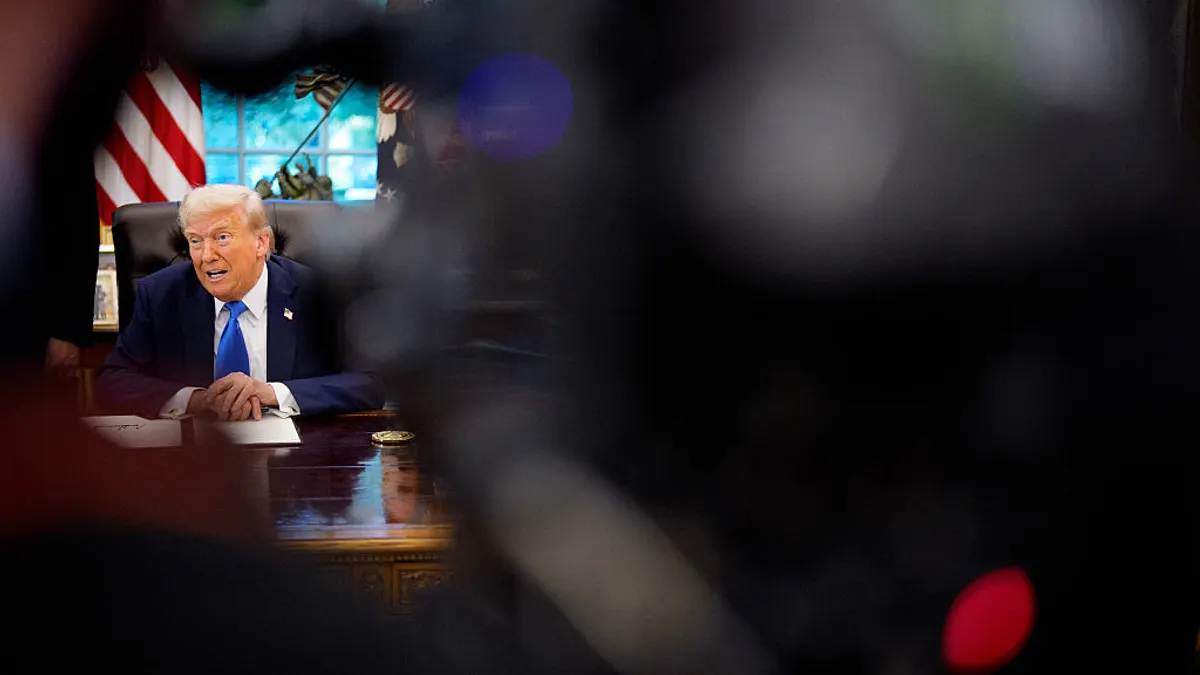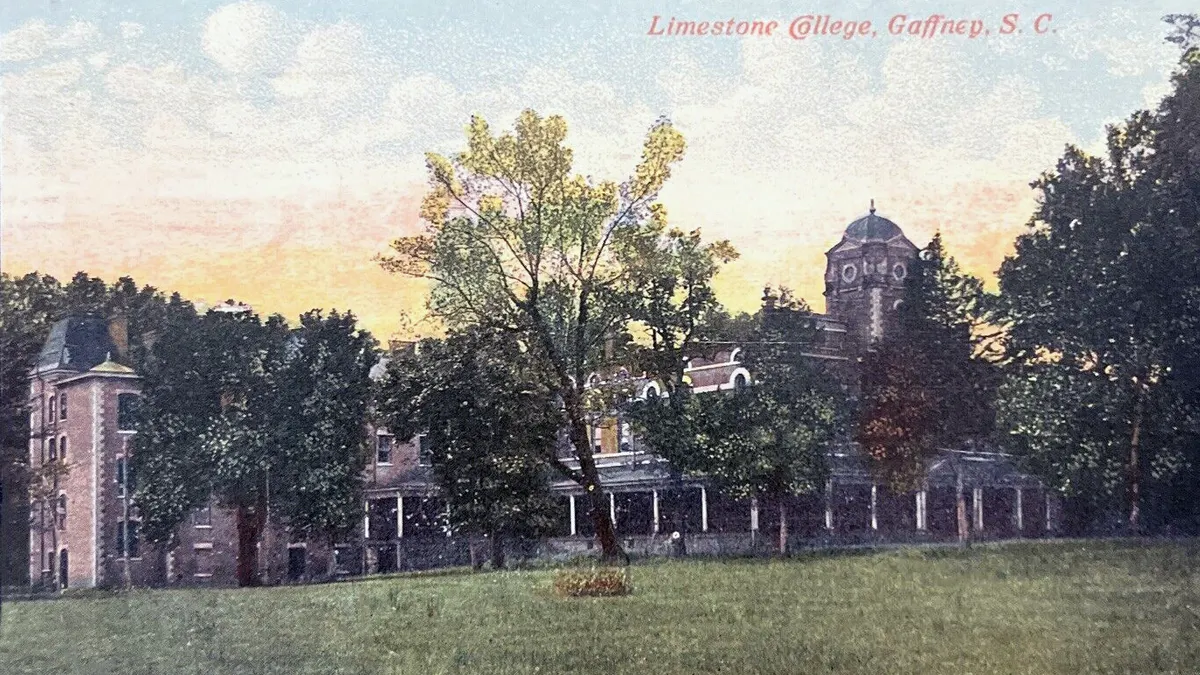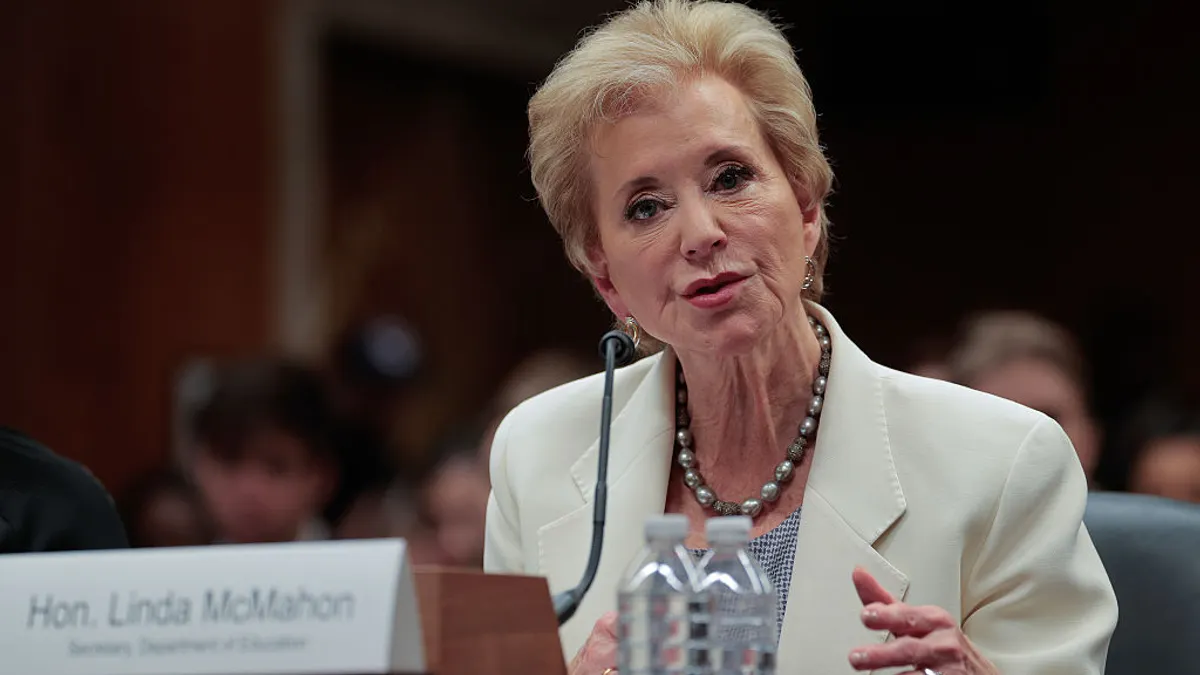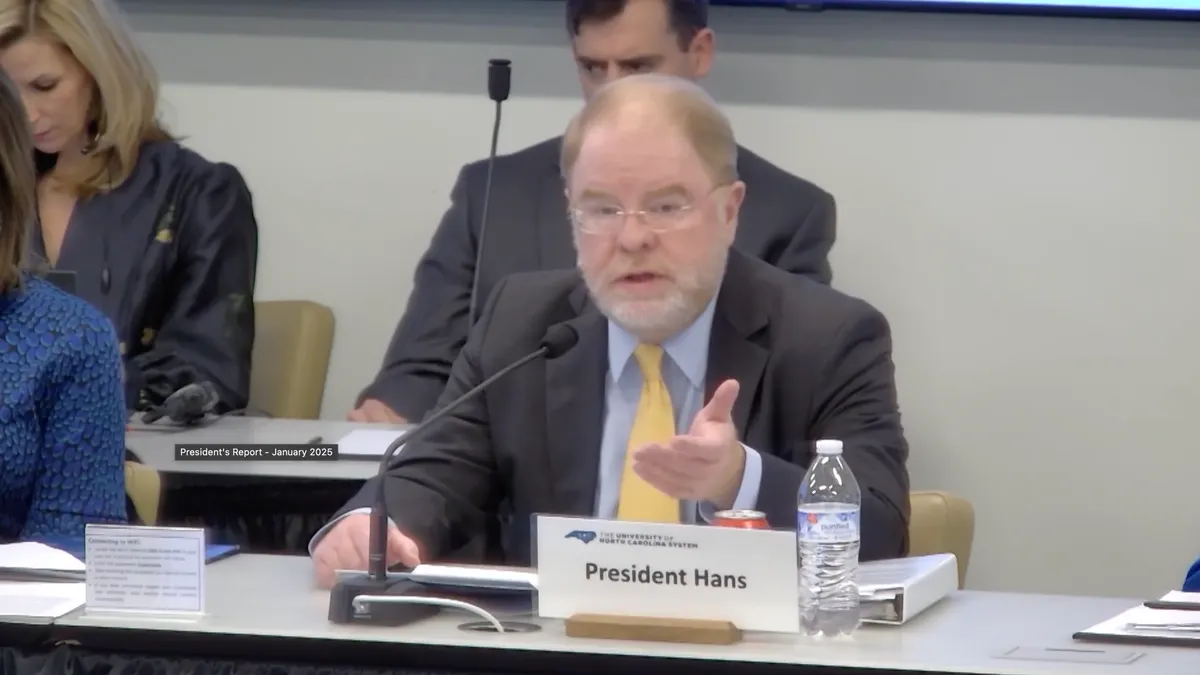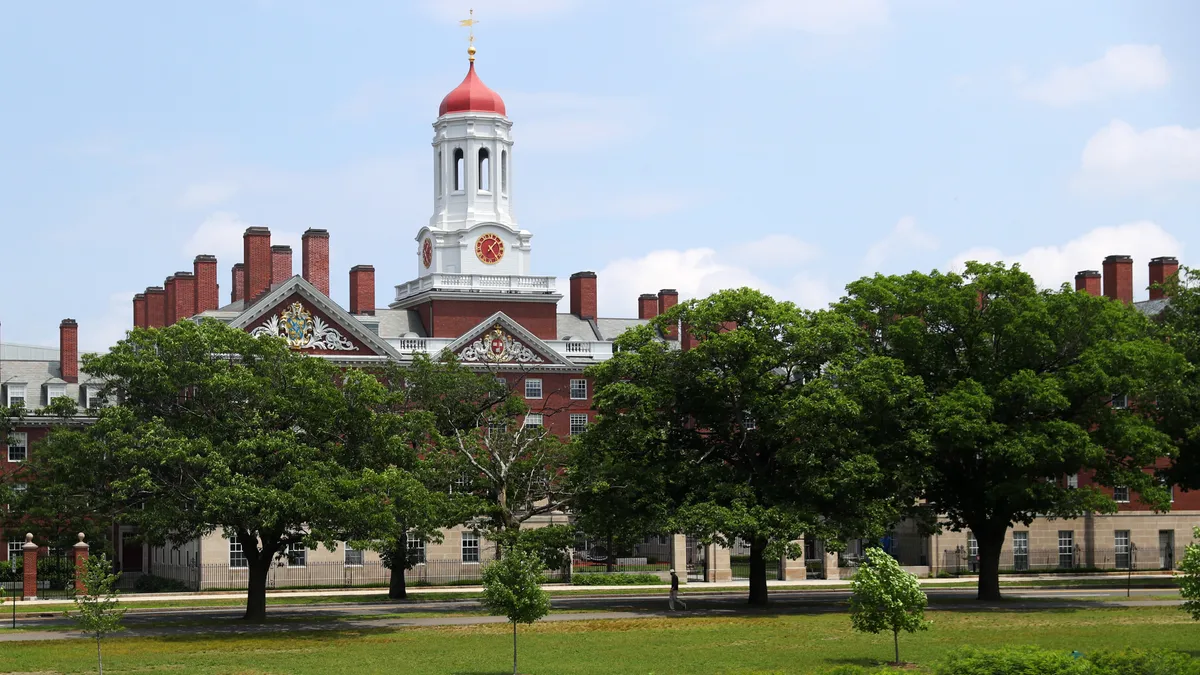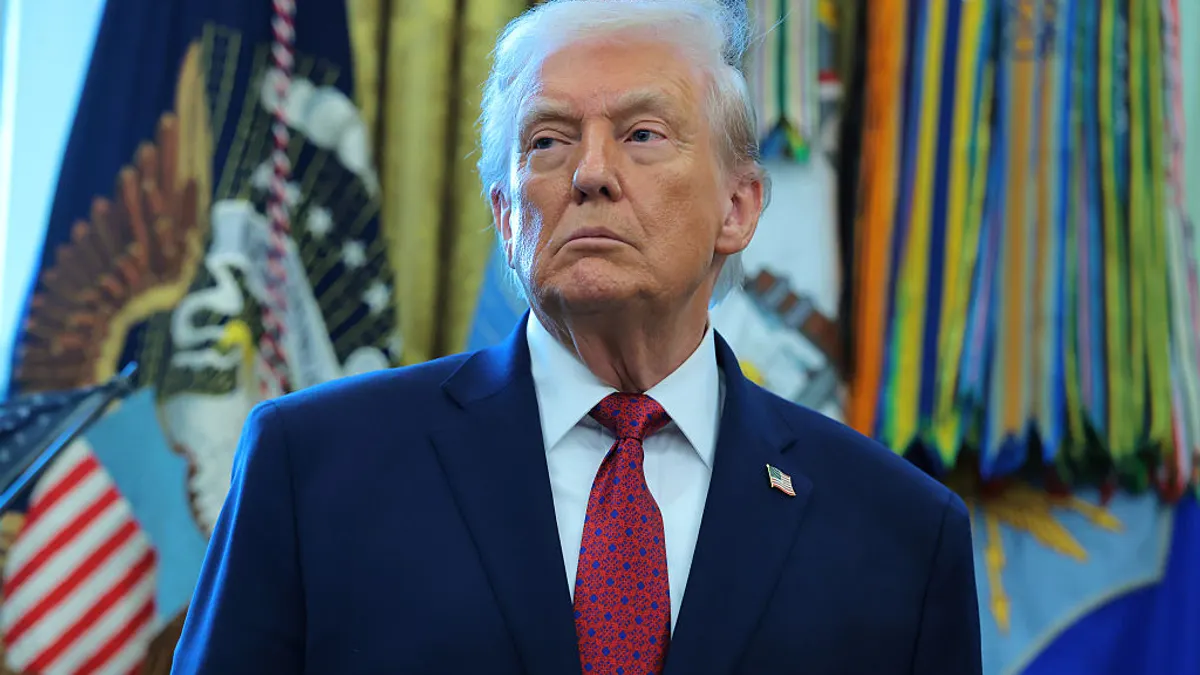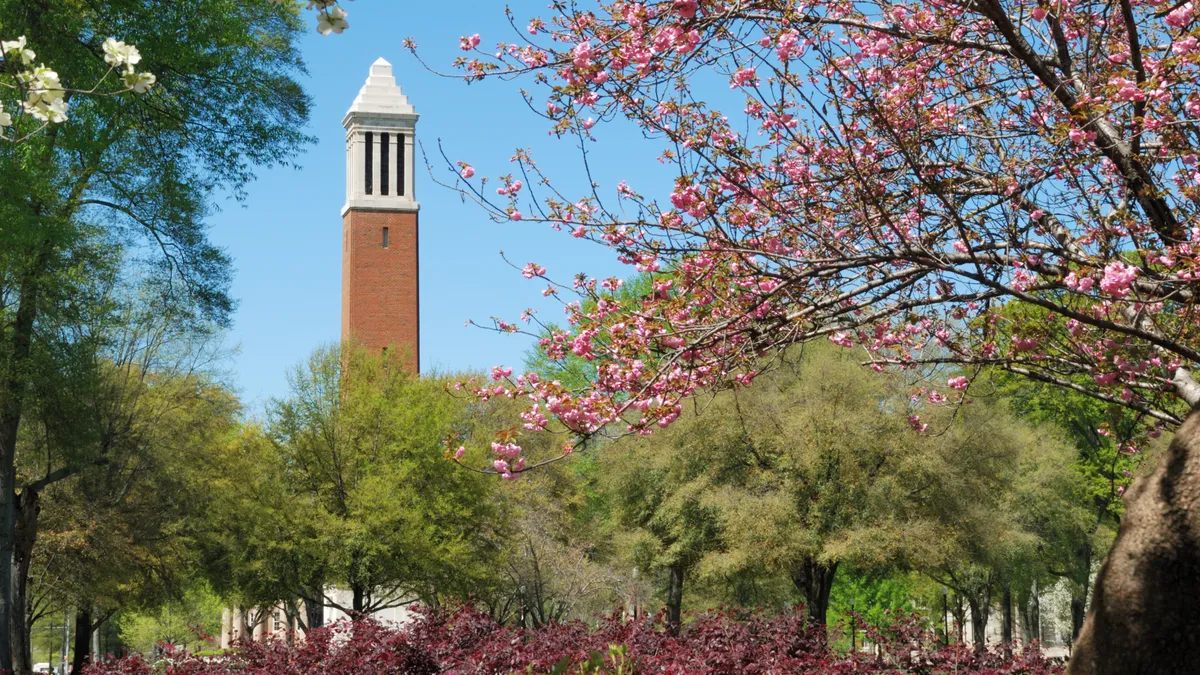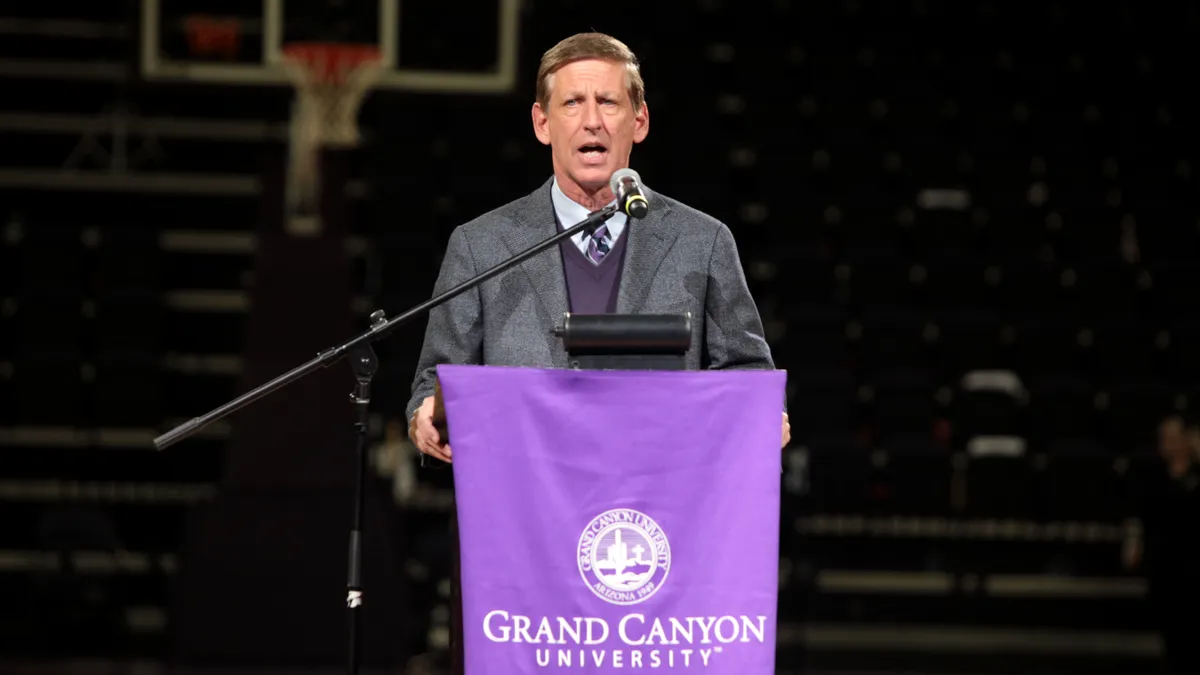Higher ed leaders have always faced a plethora of hurdles and issues confronting their institutions, but the 21st Century has brought perhaps some of the most challenging: disruptive technological forces, changing demographics, falling enrollments, and ongoing questions over the value of a college education amid skyrocketing student loan debt. And that's not even counting the school-specific problems they face.
In 2014, a number of institutions were faced with problems that threatened the public's perception, if not the way they operate on a daily basis, ranging from major issues (campus sex assault problems and cheating scandals) to more minor ones (questions about their backgrounds). Whatever the case at their particular institutions may be, these are six higher ed presidents you'll want to keep an eye on through 2015.
1. Thomas W. Ross - University of North Carolina System
In office since January 2011, Ross had a long, successful legal career — at one point serving a 17-year stint on the bench of North Carolina Superior Court — prior to entering academia, where he's also served as president of Davidson College. Chief among the issues Ross faces is the "paper classes" cheating scandal at UNC-Chapel Hill.
While the scandal itself is nothing new — it's been making headlines since at least 2012 — recent developments have been particularly troubling. A new report issued in October by former Justice Department official Kenneth Wainstein revealed that the "paper classes," which gave easy passing grades for essays that required little-to-no effort, were taken by an estimated 3,100 students over the course of almost two decades. The revelation that the African Studies department scandal was deeper than previously believed (and that it extended well beyond student athletes) led to a new investigation by the university's accreditor and could lead to sanctions from the NCAA.
Naturally, Chapel Hill Chancellor Carol Folt, who came on in 2013, is also a higher ed leader to watch as this story continues to unfold over the next year.
2. Teresa Sullivan - University of Virginia
Teresa Sullivan's tenure at the helm of the University of Virginia has already been anything but smooth. In June 2012, she was ousted from the position, much to the dismay of many in the UVA community and others, and then reinstated following a battle within the institution's board of visitors that led one member to resign.
The last month, however, has presented what is arguably the greatest challenge of Sullivan's presidency thus far. As dozens of institutions nationwide have moved to address questions about campus sexual assaults (and the resulting punishment or lack thereof for these crimes), Rolling Stone magazine published a damning article on the problem at UVA in particular, featuring a graphic account of an alleged gang rape in a fraternity house. Frats have since been suspended at the school, but the situation continues to plague university leaders. One dean admitted that students are rarely expelled for sex assault, and Sullivan's initial responses to the issue didn't exactly satisfy critics. (Not to mention the university's first pick to lead an investigation into the rape detailed in the Rolling Stone article was not only a former U.S. deputy attorney general, but an alumnus of the frat in question.)
Still, the university this week detailed its new policy for sex assault and, in one of her first interviews since the controversy began, Sullivan suggested a ban of all alcohol except beer. This is likely a firestorm the institution won't climb out of until next year, but how it gets there should be interesting to other schools facing similar issues.
3. Janet Napolitano - University of California System
Sure, the former Homeland Security secretary and Arizona governor is a repeat from last year's list. But Janet Napolitano has continued making waves at UC's 10 campuses, this year with a proposed tuition hike that would see an increase of 5% per year for five years. The proposal ends a three-year tuition freeze.
Students have protested the move and Gov. Jerry Brown isn't exactly a fan, either. There is, of course, the possibility the proposal is a move to get the state to take requests for additional funding more seriously — and you have to admit, it'd be a clever move. Especially since the state's legislators are now moving to minimize the impact of such a move. If it works, and the school receives more funding to lessen the hike or head it off all together, could higher ed leaders in other states successfully emulate the tactic?
4. John Thrasher - Florida State University
Another politician-turned-university-president, John Thrasher was revealed in May as the sole candidate for the presidency of Florida State University. The former Republican state senator's selection received backlash from students and faculty who thought his candidacy discouraged others from applying. Some also cited his lack of experience in higher ed and a legislative proposal that would have split a college of engineering co-operated by Florida State and Florida A&M.
While the university did eventually consider other candidates, and despite a September grilling during student and faculty forums, Thrasher ultimately got the job. Will the students and faculty opposed to his selection warm to him, or will their concerns about his level of experience prove well-founded?
5. Sally Mason - University of Iowa
During her time at the head of the University of Iowa, Sally Mason has had to confront a 2012 faculty-student sexual harassment investigation that she said she would have rather kept under wraps, as well as the university's image as a top party school. Her greatest challenge thus far, however, may be a new performance-based funding model.
In October, Mason — along with the presidents of the University of Northern Iowa and Iowa State University, as well as the state's board of regents — requested an additional $12.9 million to help cushion the blow to the University of Iowa from the new model. As it stands, the model will cut state funding to the school by $46.4 million over three years, redirecting those funds to the other two schools: $23.6 million to UNI and $22.8 million to ISU. The adoption of the model in general was a sore point for faculty, and Mason likely wasn't thrilled with it, either, surely knowing what it would mean.
How this issue plays out will be worth referencing for institutions in other states that might consider similar funding models.
6. William Powers, Jr. - University of Texas at Austin
Higher education is no stranger to power struggles, and perhaps the most prominent this year took place at UT-Austin. That campus' president, William Powers, Jr., was essentially forced to resign despite support from students and a what could easily be characterized as a successful run at the helm.
First, in June, a university regent, Wallace Hall, who had long campaigned to remove Powers from his office, was blasted by legislators. They found his efforts to have Powers fired were likely impeachable offenses. You'd think that would give Powers some reason to breathe a little more easily, but UT System Chancellor Francisco Cigarroa was also not happy with the Austin administrator. Cigarroa asked him to step down in April, then changed his stance due to what he said were better relations between Powers and system officials and regents. Powers, who was alleged to have helped otherwise unqualified family and friends of state legislators gain admission to the school, ultimately resigned in July, but is allowed to stay in office through June 2015.
This, of course, all followed a glowing New York Times article detailing the school's student success efforts. Powers' next move after June should be interesting: Will he return to UT-Austin's law school, where he previously served as dean? Or will another institution, unconvinced by the arguments against his Austin presidency, look to him once more for leadership?
Would you like to see more education news like this in your inbox on a daily basis? Subscribe to our Education Dive email newsletter! You may also want to read Education Dive's look at how 6 higher ed institutions are continuing their approach to MOOCs.



